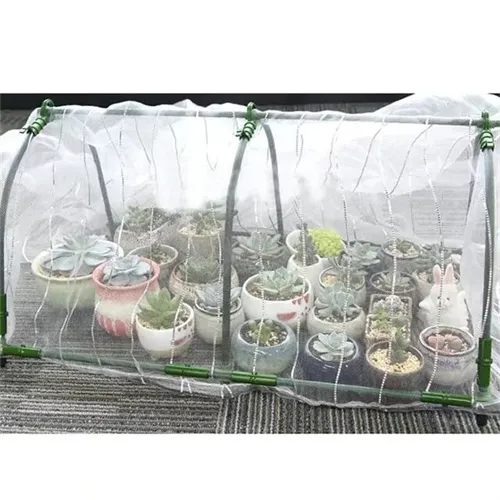-
 Afrikaans
Afrikaans -
 Albanian
Albanian -
 Amharic
Amharic -
 Arabic
Arabic -
 Armenian
Armenian -
 Azerbaijani
Azerbaijani -
 Basque
Basque -
 Belarusian
Belarusian -
 Bengali
Bengali -
 Bosnian
Bosnian -
 Bulgarian
Bulgarian -
 Catalan
Catalan -
 Cebuano
Cebuano -
 China
China -
 Corsican
Corsican -
 Croatian
Croatian -
 Czech
Czech -
 Danish
Danish -
 Dutch
Dutch -
 English
English -
 Esperanto
Esperanto -
 Estonian
Estonian -
 Finnish
Finnish -
 French
French -
 Frisian
Frisian -
 Galician
Galician -
 Georgian
Georgian -
 German
German -
 Greek
Greek -
 Gujarati
Gujarati -
 Haitian Creole
Haitian Creole -
 hausa
hausa -
 hawaiian
hawaiian -
 Hebrew
Hebrew -
 Hindi
Hindi -
 Miao
Miao -
 Hungarian
Hungarian -
 Icelandic
Icelandic -
 igbo
igbo -
 Indonesian
Indonesian -
 irish
irish -
 Italian
Italian -
 Japanese
Japanese -
 Javanese
Javanese -
 Kannada
Kannada -
 kazakh
kazakh -
 Khmer
Khmer -
 Rwandese
Rwandese -
 Korean
Korean -
 Kurdish
Kurdish -
 Kyrgyz
Kyrgyz -
 Lao
Lao -
 Latin
Latin -
 Latvian
Latvian -
 Lithuanian
Lithuanian -
 Luxembourgish
Luxembourgish -
 Macedonian
Macedonian -
 Malgashi
Malgashi -
 Malay
Malay -
 Malayalam
Malayalam -
 Maltese
Maltese -
 Maori
Maori -
 Marathi
Marathi -
 Mongolian
Mongolian -
 Myanmar
Myanmar -
 Nepali
Nepali -
 Norwegian
Norwegian -
 Norwegian
Norwegian -
 Occitan
Occitan -
 Pashto
Pashto -
 Persian
Persian -
 Polish
Polish -
 Portuguese
Portuguese -
 Punjabi
Punjabi -
 Romanian
Romanian -
 Russian
Russian -
 Samoan
Samoan -
 Scottish Gaelic
Scottish Gaelic -
 Serbian
Serbian -
 Sesotho
Sesotho -
 Shona
Shona -
 Sindhi
Sindhi -
 Sinhala
Sinhala -
 Slovak
Slovak -
 Slovenian
Slovenian -
 Somali
Somali -
 Spanish
Spanish -
 Sundanese
Sundanese -
 Swahili
Swahili -
 Swedish
Swedish -
 Tagalog
Tagalog -
 Tajik
Tajik -
 Tamil
Tamil -
 Tatar
Tatar -
 Telugu
Telugu -
 Thai
Thai -
 Turkish
Turkish -
 Turkmen
Turkmen -
 Ukrainian
Ukrainian -
 Urdu
Urdu -
 Uighur
Uighur -
 Uzbek
Uzbek -
 Vietnamese
Vietnamese -
 Welsh
Welsh -
 Bantu
Bantu -
 Yiddish
Yiddish -
 Yoruba
Yoruba -
 Zulu
Zulu
Understanding the Factors Influencing Hail Net Price Trends in the Agricultural Market
Understanding Hail Net Price Factors and Implications
In the agricultural industry, hail can be a devastating event, leading to significant financial losses for farmers. As a result, there has been a growing interest in hail damage assessment and management strategies, including the concept of hail net price. This term refers to the price adjustments and insurance costs associated with crop protection against hail damage. Understanding how hail net price operates is vital for farmers, insurers, and policymakers alike, as it encapsulates the risks and economic implications of hail on agricultural production.
What is Hail Net Price?
The hail net price is the effective price a farmer receives for their crops after accounting for the costs related to hail insurance premiums, deductibles, and the actual damage incurred during a hail event. It acts as a critical measure of the financial viability of agricultural enterprises in regions prone to hailstorms. When determining this price, farmers must consider the costs of implementing hail protection measures, such as nets or insurance premiums, against the potential losses they could incur from hail damage.
Factors Influencing Hail Net Price
Several factors affect the hail net price, including geographical location, crop type, and weather patterns. Regions with a history of frequent and severe hailstorms often see higher insurance premiums, which directly impacts the net price farmers can expect to receive. Conversely, areas that experience fewer hail incidents may enjoy lower premiums and, thus, a more favorable net price.
The type of crop also plays a crucial role; some crops are more resistant to hail damage than others. For instance, sturdy crops like corn may sustain less damage compared to more delicate crops such as fruits and vegetables. The potential yield loss and restoration costs after hail damage significantly influence how insurers calculate premiums. Additionally, the seasonality of crop production means that net prices can fluctuate throughout the year, depending on when crops are most vulnerable to hail.
hail net price

Economic Implications
The implications of hail net price extend beyond individual farmers. When farmers experience losses due to hail, the economic ripple effect can impact local economies and food supply chains. These losses can lead to increased food prices if supply diminishes significantly, thus affecting consumers. Furthermore, if hail-related losses become too frequent or severe, it might drive farmers out of business altogether, diminishing agricultural output in the region and affecting jobs tied to farming and agriculture.
Insurance companies also have a stake in the dynamics of hail net pricing. They must carefully assess risks and set premiums to remain financially viable while providing affordable coverage options for farmers. If the overall costs of hail damage exceed what farmers can afford in premiums, there may be a market failure, leading to a lack of coverage options.
Strategies for Farmers
To navigate the challenges associated with hail net price, farmers can adopt several strategies. Investing in protective measures like hail nets can mitigate damage and lower insurance premiums over time. Additionally, maintaining diversified crop portfolios can help reduce overall risk, as some crops may be more susceptible to hail than others. Finally, farmers should engage in proactive communication with insurance providers to understand the terms of their coverage and explore options that best align with their financial needs.
Conclusion
In summary, hail net price is a critical concept in understanding the financial implications of hail damage in agriculture. It encapsulates the interplay between risk management, crop economics, and insurance practices. By adopting effective strategies and staying informed about market conditions, farmers can better navigate the challenges posed by hail and enhance their agricultural resilience in an increasingly unpredictable climate.
-
Shipping Plastic Bags for Every NeedNewsJul.24,2025
-
Safety Netting: Your Shield in ConstructionNewsJul.24,2025
-
Plastic Mesh Netting for Everyday UseNewsJul.24,2025
-
Nylon Netting for Every UseNewsJul.24,2025
-
Mesh Breeder Box for Fish TanksNewsJul.24,2025
-
Expanded Steel Mesh Offers Durable VersatilityNewsJul.24,2025











